Hong Kong and Macau Travel - 1
I visited Hong Kong and Macao again in February. My first trip in 2016 had left almost no trace; I simply remember trudging along and thinking there was nothing to see. This time I came back to look afresh.
I flew from Chengdu Tianfu to Guangzhou. In the past I had always rushed through the terminal, so I was surprised to find a small garden inside it—an unexpectedly pleasant spot.
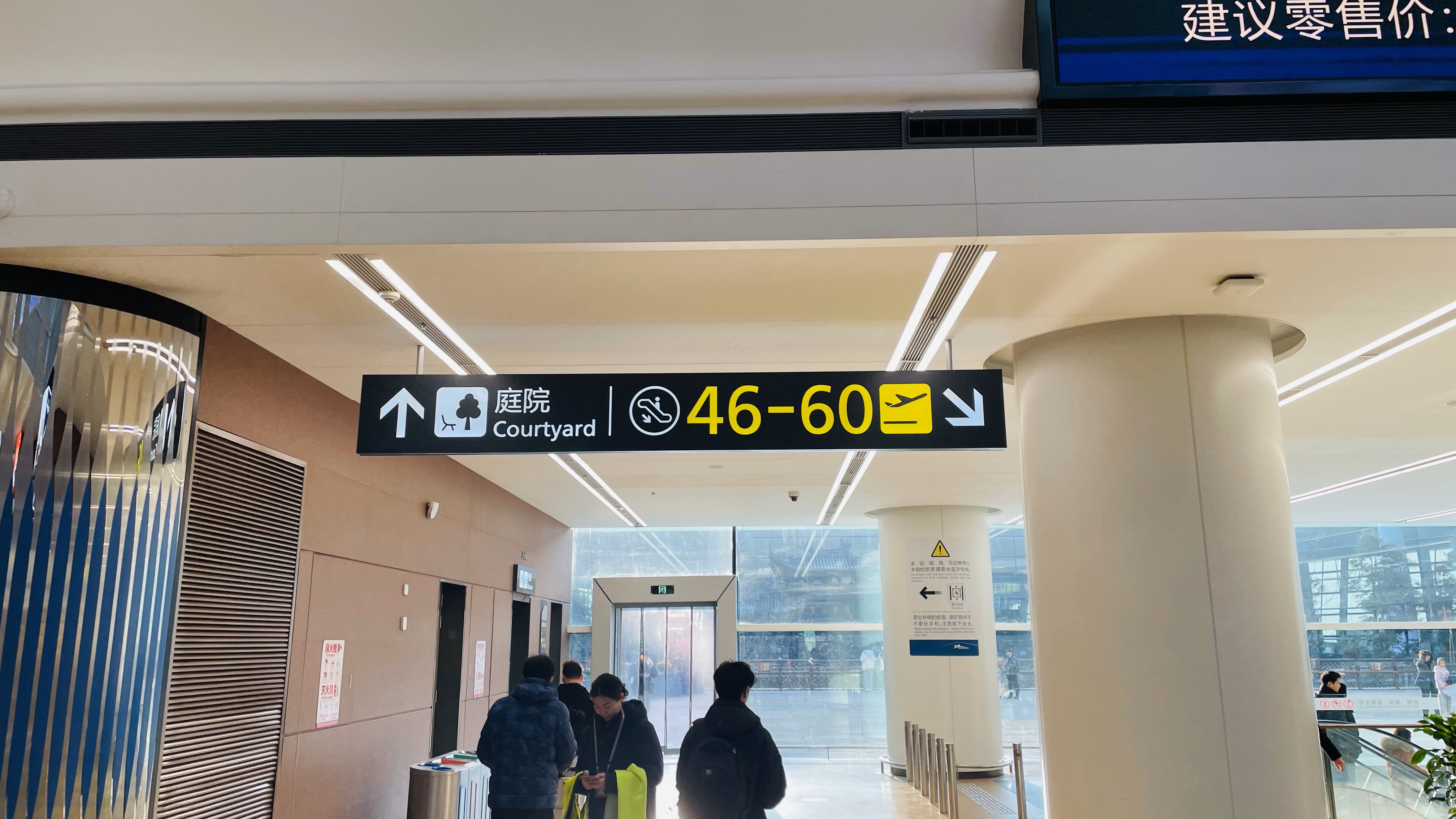
A short walk led me into the garden, where wintersweet was still blooming. Dozens of people were soaking up the sun—a classic Sichuan pastime.
After landing in Shenzhen at noon I made a quick detour to Huaqiangbei. The place has become far more regulated: “high-imitation” goods are still on sale, yet proper dealerships, especially for brands like DJI, now line the streets. That evening I had dinner with a high-school friend who is studying at CUHK. The food tasted like Chaozhou cuisine, but the real dish was conversation. Having watched capitalism at close range in Hong Kong, my philosophy-major friend has redrawn many of his earlier conclusions.
The next morning I entered Hong Kong from Luohu. The moment you passed border check you can board the MTR; our first stop was the Convention and Exhibition Centre. The ride from Luohu takes a good half-hour. To avoid staring into space, first-timers can open accounts with ZA Bank and HSBC HK on the spot. All you need is your mainland ID, the Exit-Entry Permit, the landing slip, and the travel record from Alipay. HSBC does not always keep online onboarding live, but if your application goes through, the card is ready in three or four working days.
Note: HSBC will courier the physical card to any address in mainland China by EMS free of charge. If you use your ID as proof of address, the card is sent to the address printed on the ID. One day I noticed an EMS notification in Alipay; since I am currently not at my registered address, I changed the destination inside the app and had the card delivered straight to my university. ZA Bank charges 35 HKD for postage, so I skipped the plastic—its virtual functions are enough. One playful perk ZA offers is that you can pick the last six digits of the card number yourself.
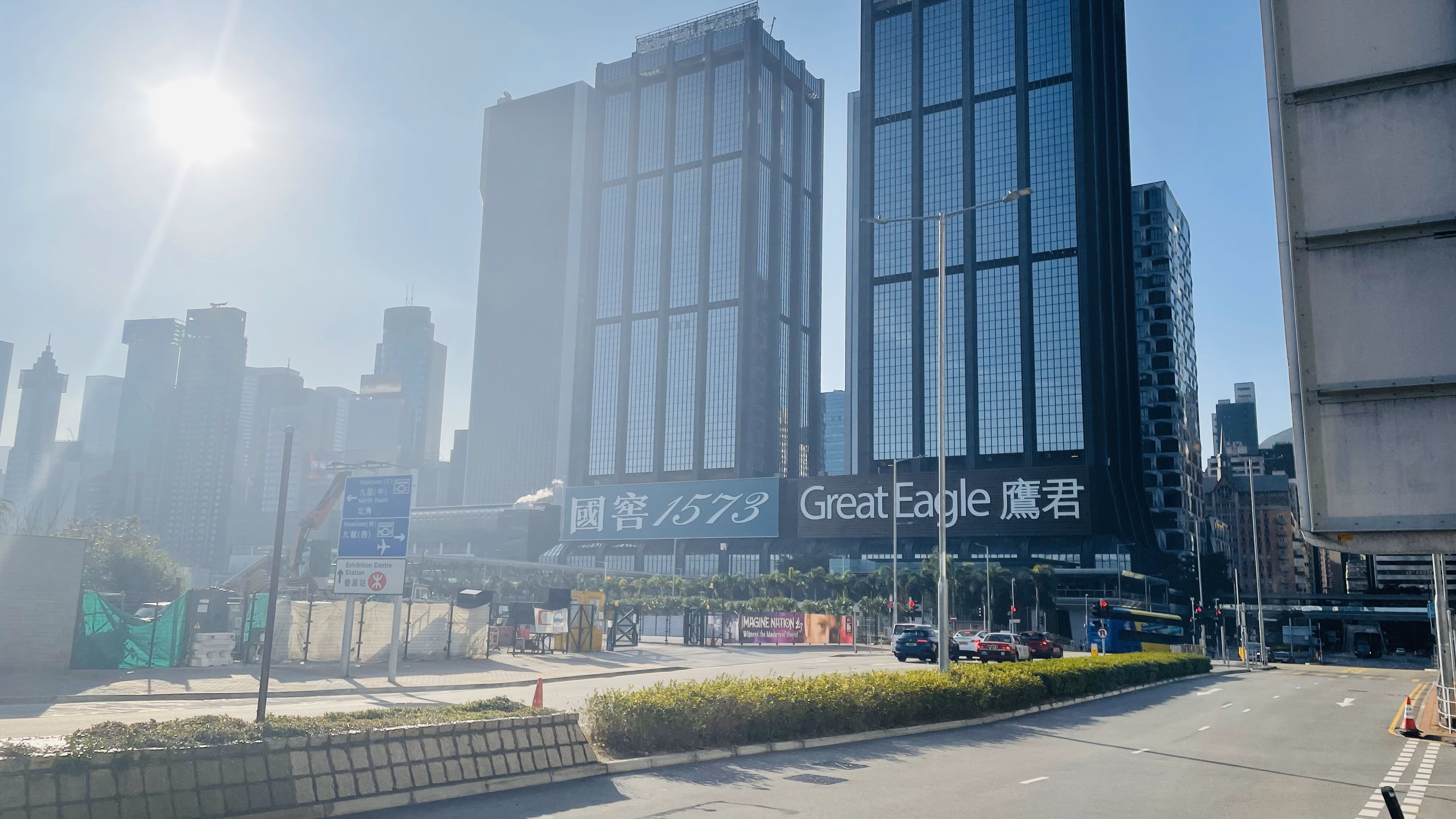
Street outside the metro; Convention and Exhibition Centre
The first stop is the Golden Bauhinia Square.

The sea-view here is stunning; for someone raised inland, open water is a rare sight, and the sudden sense of space makes a sharp contrast with the looming canyons of Central that appear later.

I kept walking along the harbourfront promenade—spotless pavement, manicured flowerbeds. It reminded me of the “civilised city” contests back home, and I assumed Hong Kong kept up the same polish to please tourists and lift local life.
It turns out I was mistaken. In reality, conditions in Hong Kong vary dramatically, and many low‑income people live in extremely cramped rooms. This area may be the first window through which Hong Kong is presented to the outside world. I later heard that University of Hong Kong students who fail to secure on‑campus dormitory accommodation have to pay a steep price to rent a place far from the university.
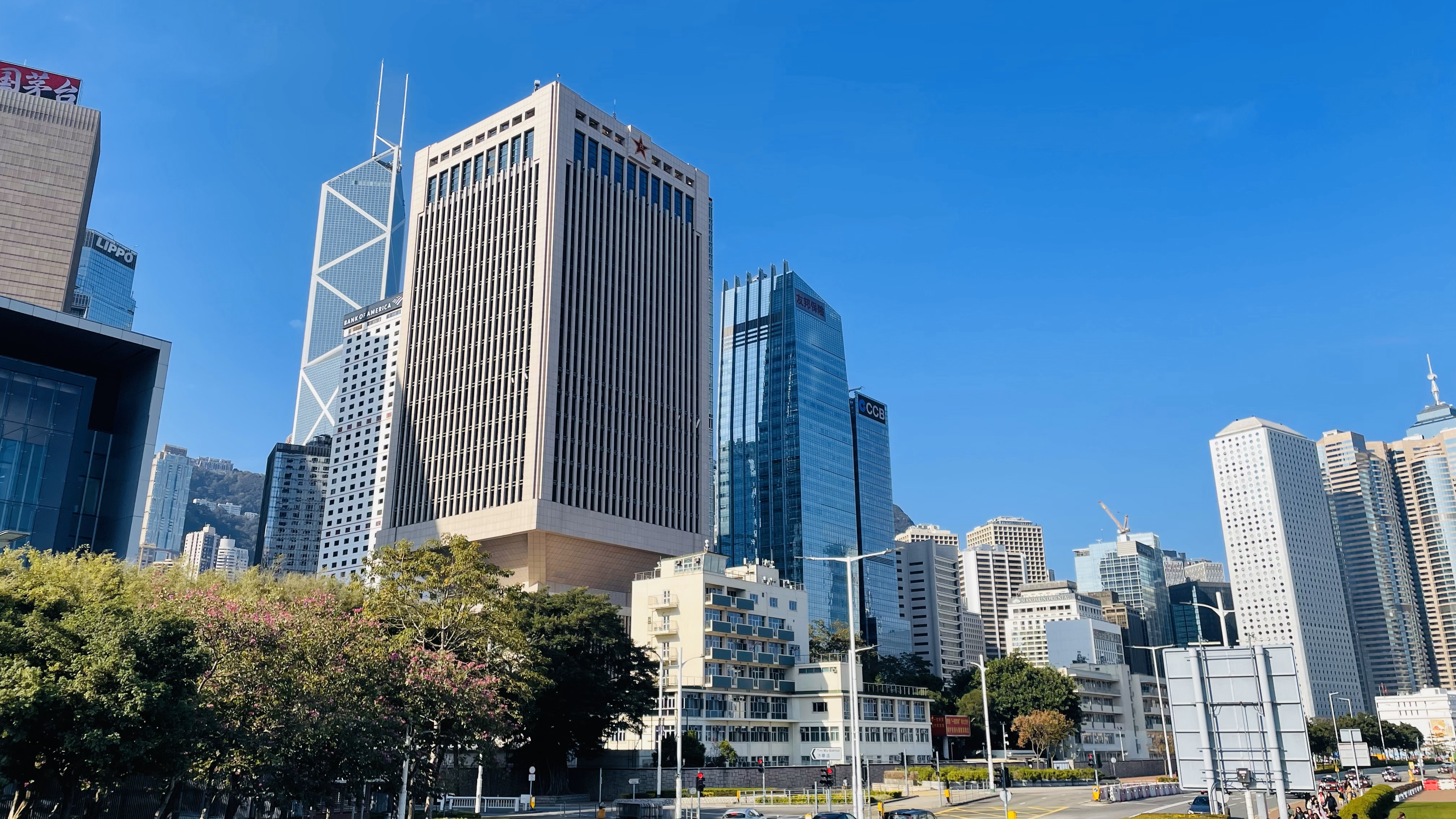
PLA barracks, its red banner declaring “Implement the great One-Country-Two-Systems policy; safeguard Hong Kong’s long-term prosperity and stability”.

Street
The subway stations in Hong Kong are enormous, almost fused with the surrounding buildings (a necessity in a place where land is extremely scarce). Transferring between lines often requires walking a considerable distance, and the stations themselves house many public‑service amenities—ATMs, convenience stores, and the like. For example, after exiting the Luohu border checkpoint, the Luohu MTR station offers a self‑service account‑opening service recently rolled out by the “Universe’s number‑one bank.”(Aha, actually I mean ICBC) However, many users spend so much time on the self‑service process that they exceed the maximum allowable ride time and are fined by the MTR when they try to exit.
Because there is no security screening, the system, much like in Switzerland, feels seamlessly integrated into the fabric of the city. Riders can also tap Alipay directly to pay for the metro, giving the same user experience as on the mainland (aside from the fare structure, which is entirely different…).

Peak Tram to the summit
Being a bit of a gullible tourist, I naturally felt obliged to shell out HK $75 once I reached the summit in order to take the lift up to the observation deck and see what all the hype was about. Sure enough, from up there you get an uninterrupted, panoramic view of the entire city of Hong Kong. But HK $75 feels like an outright money‑grab… perhaps a little too capitalist for my taste.
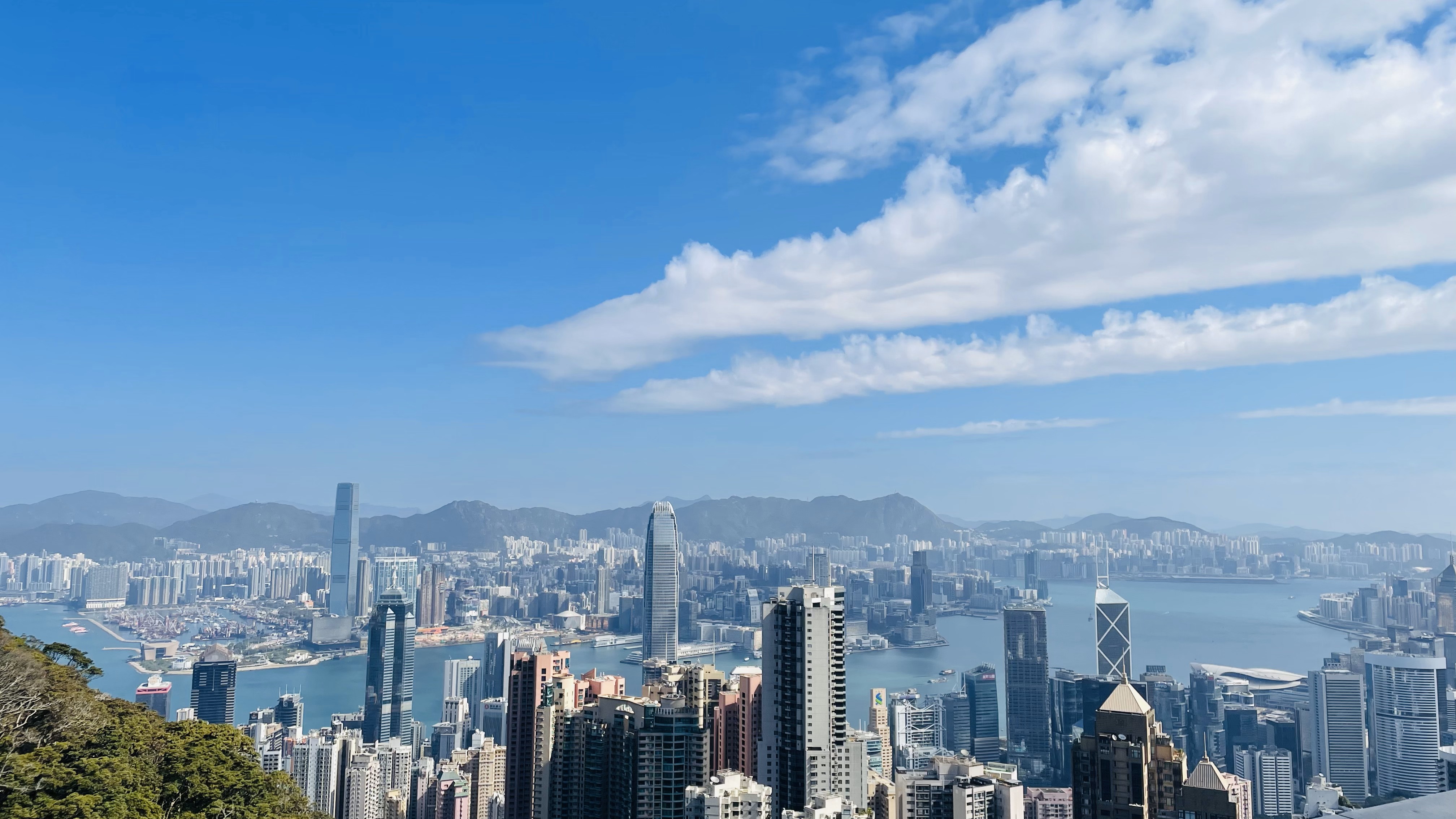


没必要在山顶吃东西,除非你和这两位冤种一样实在太饿了而且没吃早饭......
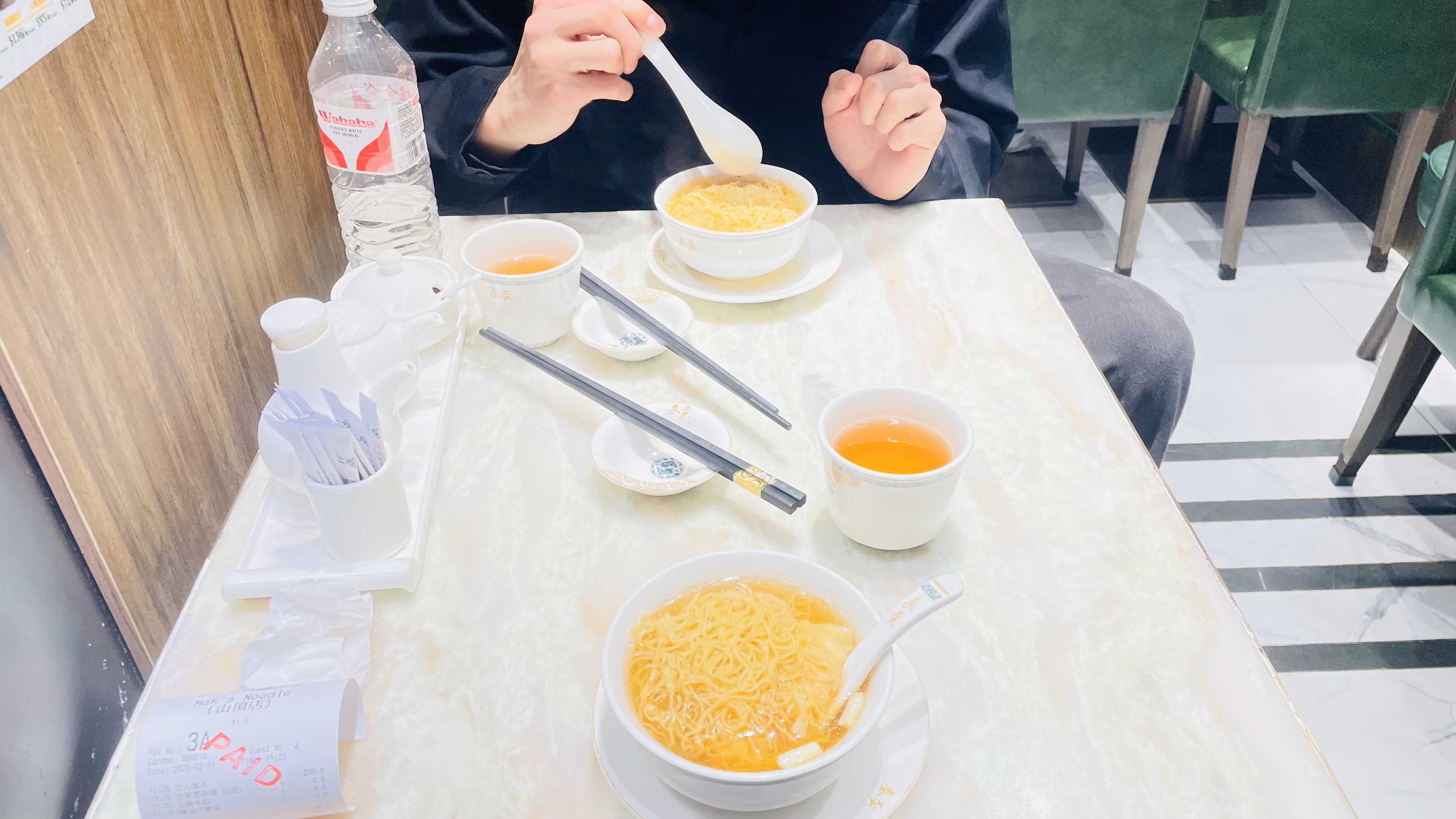
204HKD+10% service fee,双人套餐,每个人一碗馄饨。(关键是毫无service还好意思收service fee,疑似过于资本主义了)
然后去看了M+博物馆,里面有很多后现代主义的作品(人话就是抽象),原来搞抽象是人类共通的,而且还是——艺术!
M+博物馆可以买学生票,而且没有查学生证件(还好没查,不然难以解释这两个人为什么会来看M+),可能看我们两个确实很像大学生吧。M+里面有很多在常人看起来血腥、暴力、充满赤裸裸性行为的作品,以及在中国大陆不太常见的一些政治作品。乘坐电梯可以到四楼,出电梯的时候遇到了一个保洁阿姨,问我“你们是从哪里来的呀?”
“希望你们最好不是北京派过来的人,哈哈...”
我是哪个省的?我是妈妈生的......
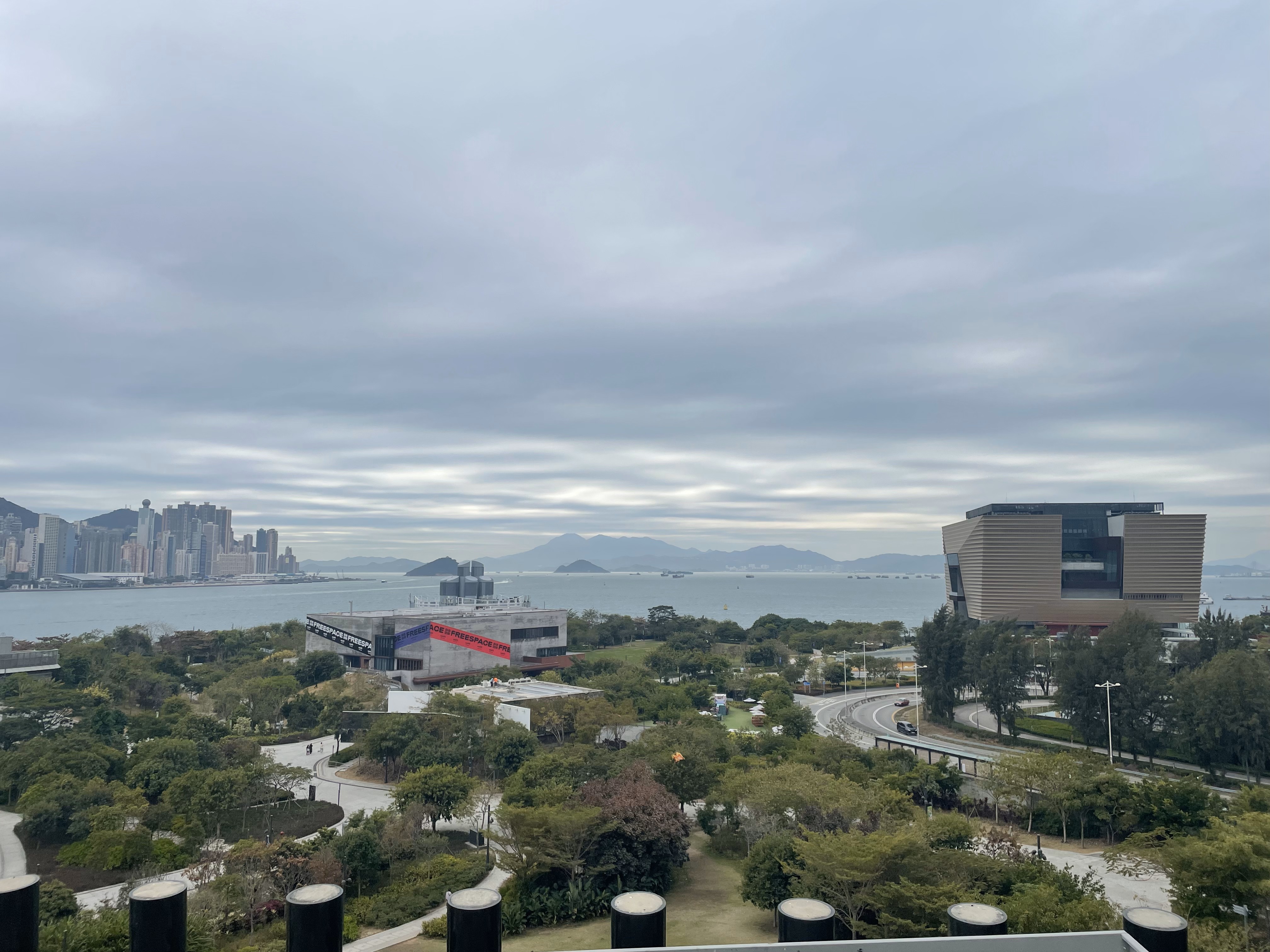
登上楼顶看到的景色,旁边其实还有故宫博物馆,但是这次没时间了
紧接着去了香港大学,去旁听了一小段宗教学的课程,也很有意思。
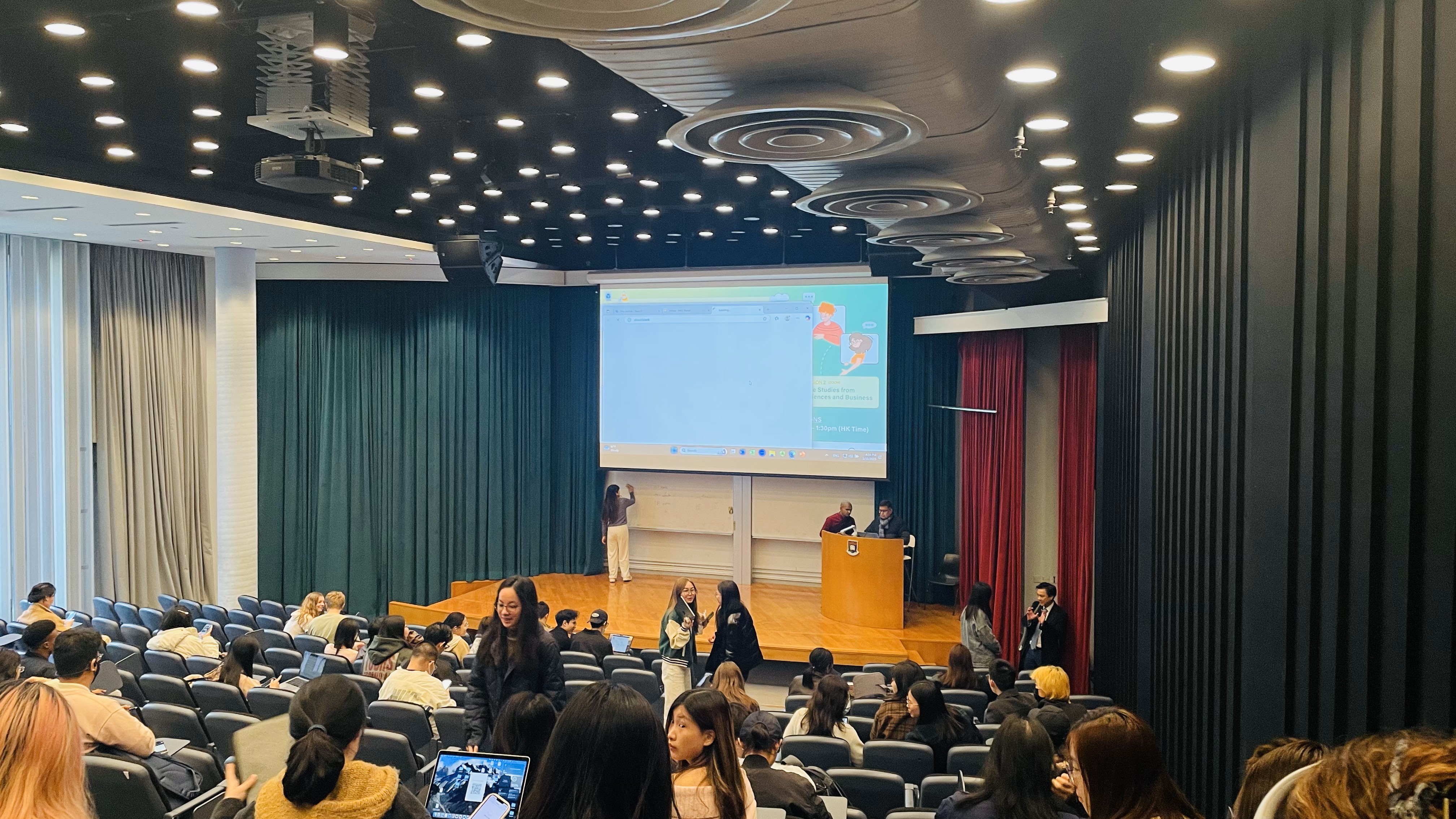
在大陆的高校我也去过很多,但是在香港大学,还是感觉很不一样。按照美国教育学家杜威的“教育无目的论”观点,或许我们(大陆)的高等教育过度关注了外在的成果和目标,而对探索未知、培养和保护好奇心、认识自我这些方面少了很多关注。期待未来的改革。
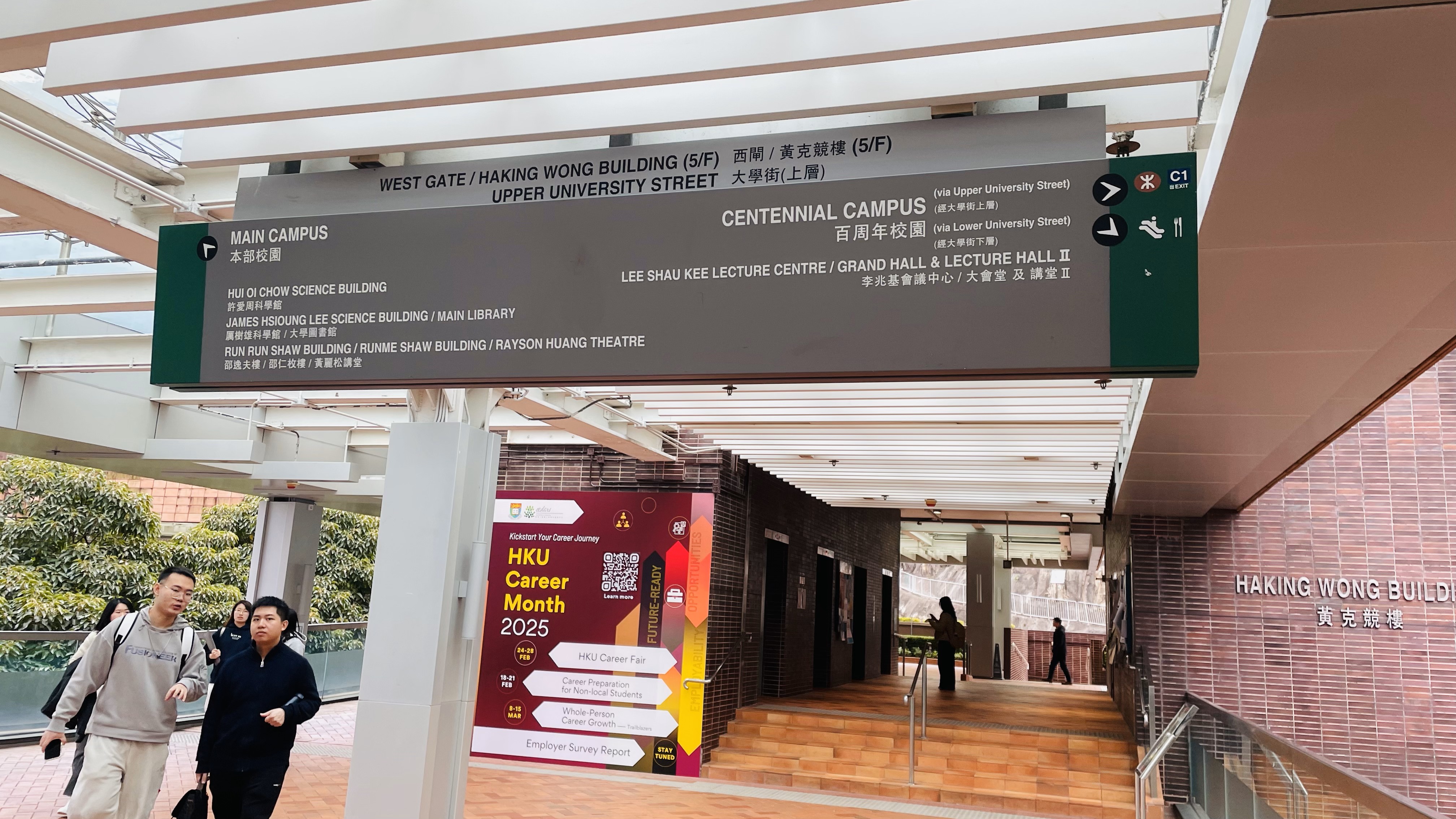
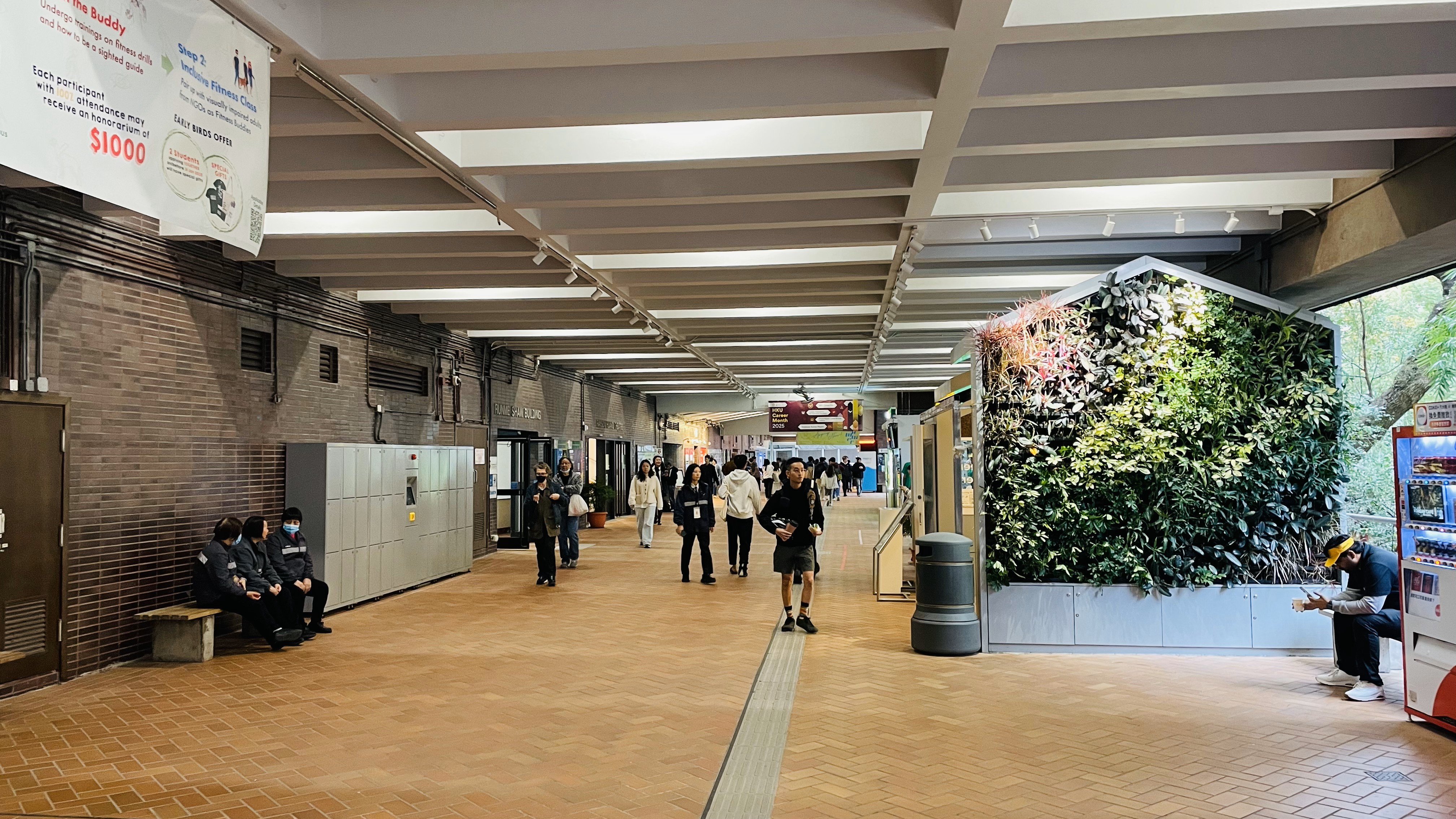

对了,在香港大学上学的成本是非常高的,同行人的高中同学招待我们在香港大学吃了一点点心,两个不大的肉丸子就要差不多30HKD了。对于从大陆过来上学的学生,如果没有全额奖学金,还要支付一笔不菲的学费。
许多人的想法是,在香港读本科(或者读本科以后接着读硕士),然后通过就业的方式(或读书)在香港待满七年,就可以通过优才计划拿到香港护照。我了解到,这不仅是出于对自身未来国际化发展的需要,也有对下一代教育的考量。不过鉴于香港的房价实在是太高,即使拿到了优才计划,似乎也要积累足够的财富才行......当然很多人在香港赚够了钱就回内地自己老家(二线城市)养老了。在香港,送外卖月薪似乎能达到20 000HKD。
之后去了星光大道,下起了小雨,夜景很好看。
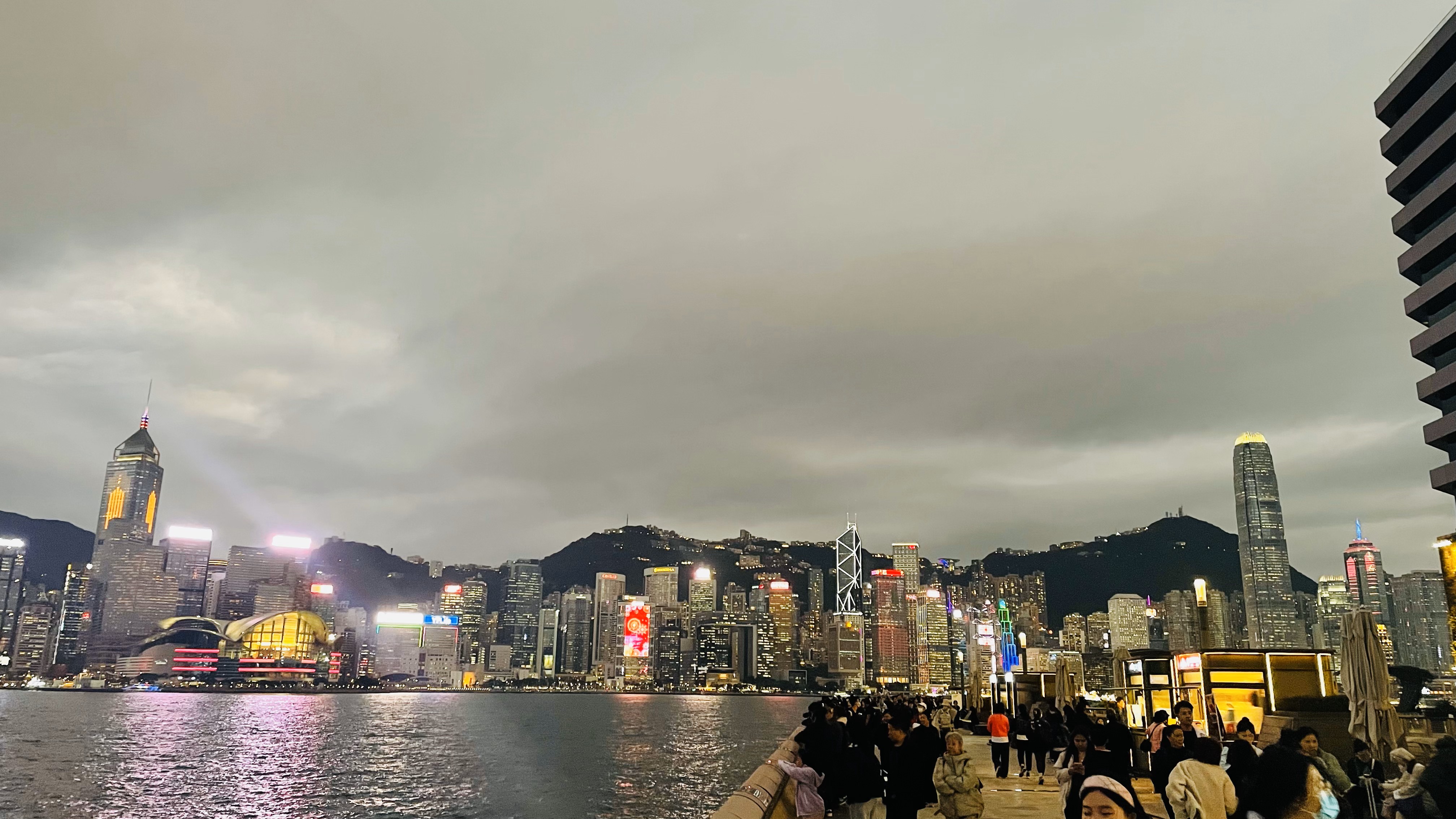
然后就是坐地铁回罗湖口岸入关。入关之后吃了一顿烧烤,两个人吃得贼饱,花了170RMB(没吃晚饭,宵夜晚饭一起吃了属于是)。